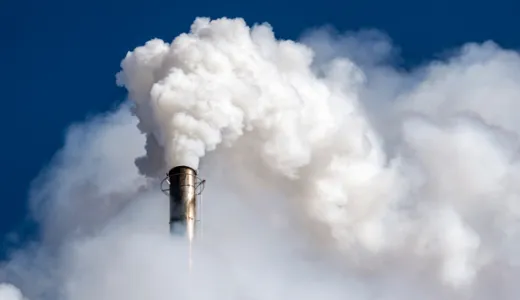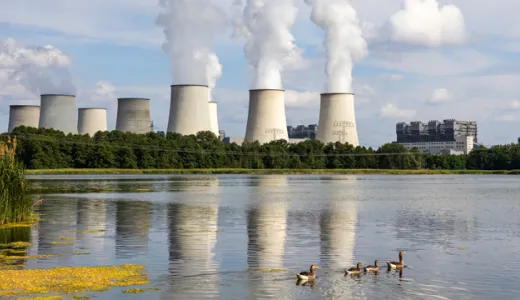What is carbon capture and storage?
Carbon capture and storage (CCS) is a way of reducing carbon dioxide (CO2) emissions, which could be key to helping to tackle global warming. It’s a three-step process, involving: capturing the CO2 produced by power generation or industrial activity, such as hydrogen production, steel or cement making; transporting it; and then permanently storing it deep underground. Here we look at the potential benefits of CCS and how it works.
What is CCS?
CCS involves the capture of CO2 emissions from industrial processes, such as steel and cement production, or from the burning of fossil fuels in power generation. This CO2 is then transported from where it was produced, via ship or in a pipeline, and stored deep underground in geological formations.
How can CCS help prevent global warming?
The Intergovernmental Panel on Climate Change (IPCC) highlighted that, if we are to achieve the ambitions of the Paris Agreement and limit future temperature increases to 1.5°C (2.7°F), we must do more than just increasing efforts to reduce emissions – we also need to deploy technologies to remove CO2 from the atmosphere. CCS is one of these technologies and can therefore play an important role in tackling global warming.
How does CCS actually work?

There are three steps to the CCS process:
1. Capturing the CO2 for storage
The CO2 is separated from other gases produced in industrial processes, such as those at coal and natural-gas-fired power generation plants or steel or cement factories.
2. Transport
The CO2 is then compressed and transported via pipelines, road transport or ships to a site for storage.
3. Storage
Finally, the CO2 is injected into rock formations deep underground for permanent storage.
Where are carbon emissions stored in CCS?
Possible storage sites for CO2 emissions include saline aquifers or depleted oil and gas reservoirs, which typically need to be 0.62 miles (1km) or more under the ground.
As an example, a storage site for the proposed Zero Carbon Humber project in the UK is a saline aquifer named ‘Endurance’, which is located in the southern North Sea, around 90km offshore. Endurance is approximately 1 mile (1.6km) below the seabed and has the potential to store very large amounts of CO2.
Similarly, in the U.S. there are multiple large-scale CO2 sites such as the Citronelle Project in Alabama. This saline reservoir injection site is about 1.8 miles (2.9km) deep.
What is Carbon Capture, Utilisation and Storage (CCUS)? What is the difference between CCUS and CCS?
As well as CCS, there is a related concept, CCUS, which stands for Carbon Capture Utilisation (or sometimes this is termed ‘usage’) and Storage. The idea is that, instead of storing CO2, it could be re-used in industrial processes by converting it into, for example, plastics, concrete or biofuel.
Is storing CO2 as part of CCS safe?
According to industry body the Global CCS Institute, CCS is ‘a proven technology that has been in safe operation for over 45 years’. It adds that all components of CCS are proven technologies that have been used for decades on a commercial scale.
Where is CCS being used already and what's in development?
According to the Global CCS Institute’s 2022 report, there were 194 large-scale CCS facilities globally at the end of the year – compared to 51 in 2019 – 61 of which were new CCS facilities added to the project pipeline in 2022. 30 of these projects are in operation, 11 under construction and the remainder in various stages of development.
Of the total number of projects, 94 were in the Americas (80 in the U.S.), 73 in Europe (27 in the UK), 21 in Asia-Pacific and 6 in the Middle East.
The CO2 capture capacity of all CCS facilities under development grew to 244 million tonnes per annum in 2022 – an impressive increase of 44% over the year.
Where was the first CCS facility?
CCS has been in operation since 1972 in the U.S., where several natural gas plants in Texas have captured and stored more than 200million tons of CO2 underground.
Last updated: 26 Mar 2024
The information in this article is intended as a factual explainer and does not necessarily reflect National Grid's strategic direction or current business activities.



